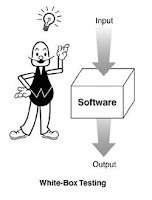Regression Testing is a testing that ensures any bug fixing or enhancement to the application works properly and does not affect existing functionality of an application.
Regression Testing is a very good candidate for automation.
When is regression testing done:
1.When a new feature is added to the software.
2.Bug has been fixed.
3.When environment changes.
Types of Regression Techniques:
1.Retest All.
2.Regression Test Selection.
3.Prioritization of Tests.
1.Retest All:
In this method all the testcases in the Test Suite are re-executed.This method is very expensive and time consuming.
2.Regression Test Selection:
Instead of re-executing all the testcases from Test Suite we select part of Test Suite with specific testcases to re-execute.
3.Prioritization of Test Cases:
Testcases are prioritized based on criticality and business impact of an application.

